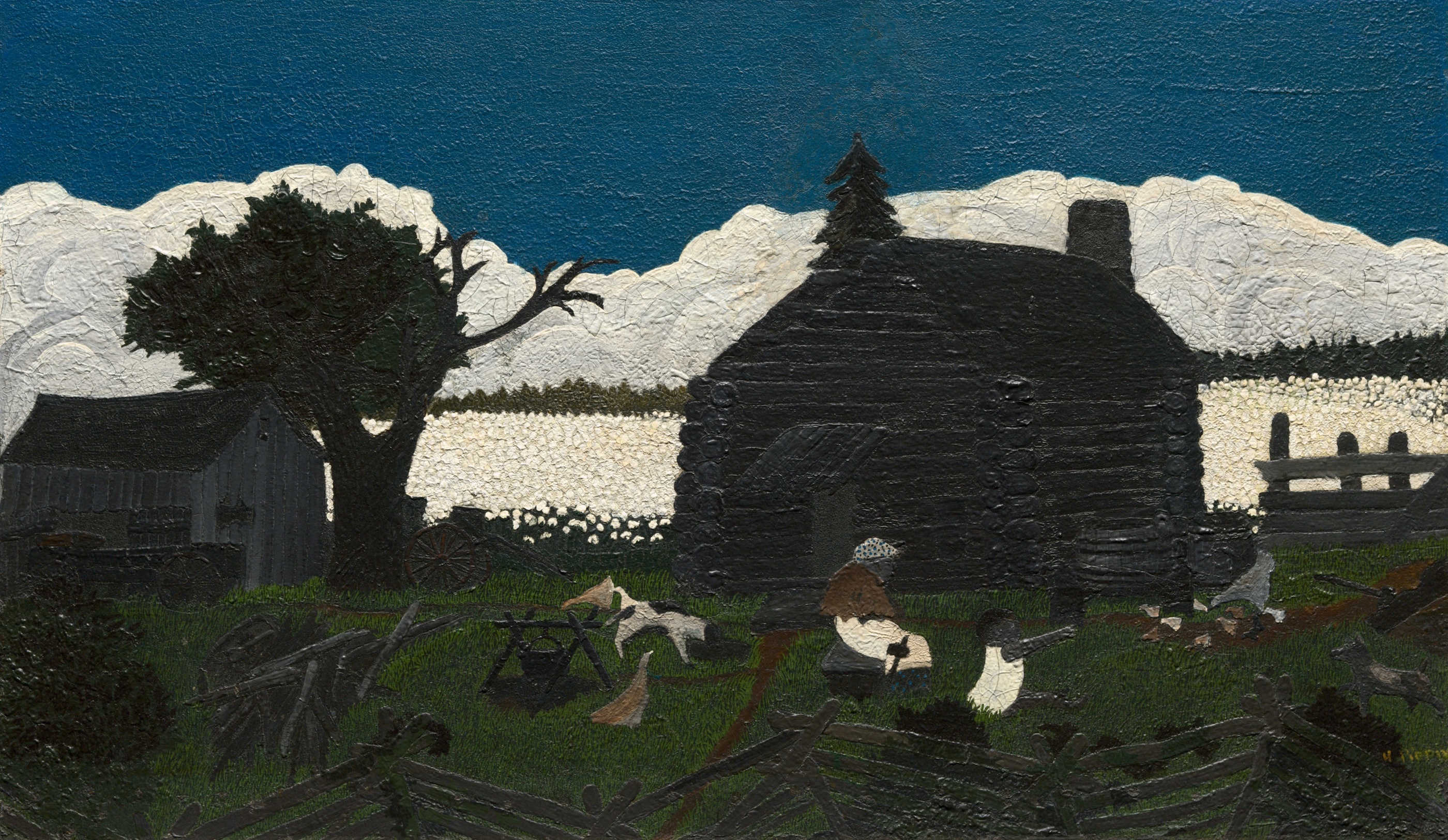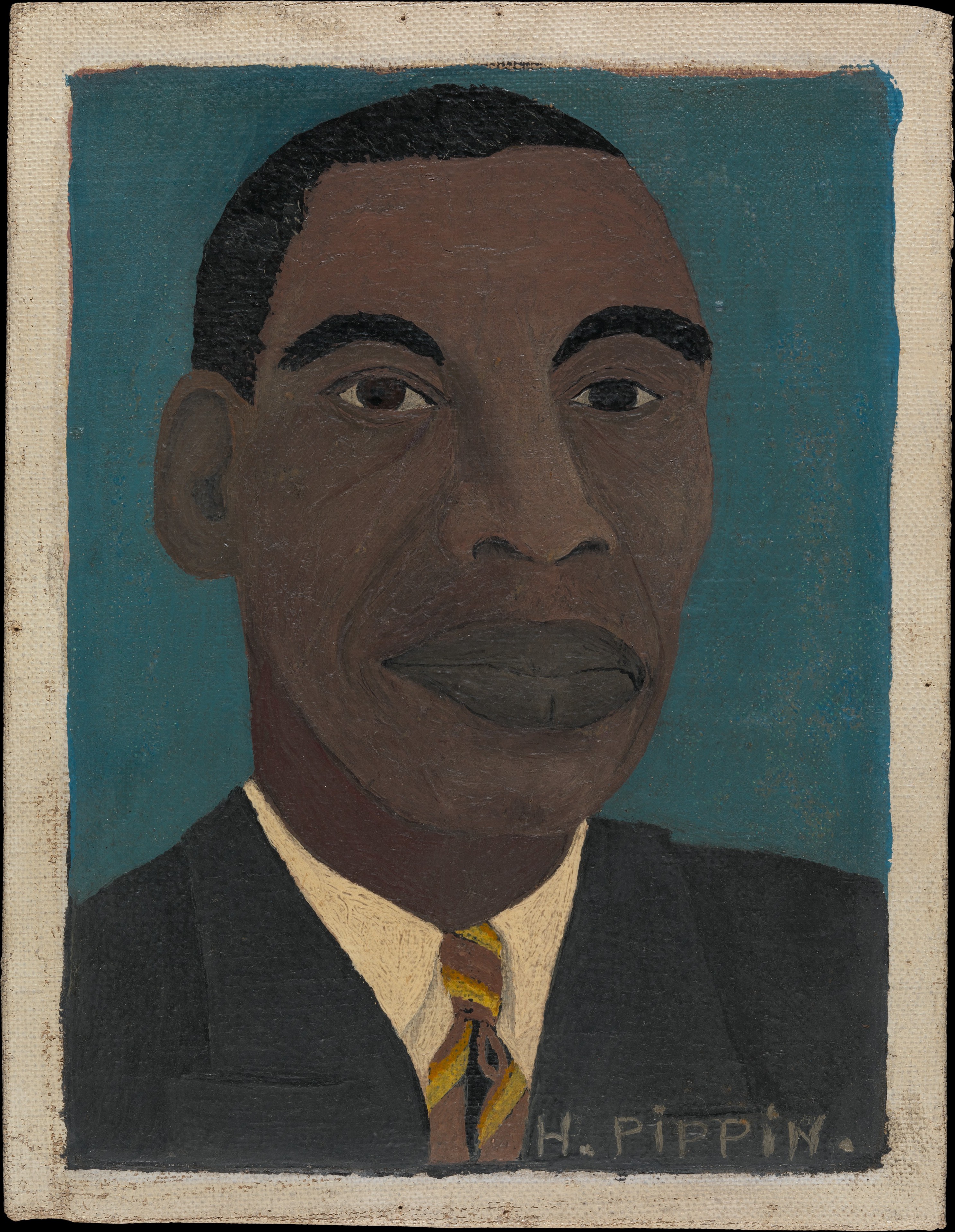The self-taught artist Horace Pippin began painting as a means of therapy, hoping to regain the mobility of his right arm, which had been injured in World War I. He became one of the most celebrated African American artists of the mid-20th century, as critics acclaimed the power and authenticity of his “primitive” style. Cabin in the Cotton, the painting that brought him to the attention of the art world, displays Pippin’s vivid, saturated palette and feeling for intense pattern.
Living in Pennsylvania, Pippin may have seen cotton fields during visits to relatives in the South, but it is more likely that he drew on popular culture for inspiration. The way of life in the rural South enjoyed a great vogue in the 1930s, with the premiere of George Gershwin’s opera Porgy and Bess in 1935 and the publication of Margaret Mitchell’s Gone with the Wind in 1936. In particular, the painting’s composition recalls the opening and closing sequences of the 1932 film Cabin in the Cotton, starring Bette Davis. In that year, both Bing Crosby and Cab Calloway made recordings of a song titled “Cabin in the Cotton.”
In 1937 Christian Brinton, an influential art critic, and N. C. Wyeth, the famous illustrator, discovered Cabin in the Cotton in the window of a shoe-repair shop in West Chester, Pennsylvania, and convinced Pippin to begin exhibiting. Newspapers then widely reported that the actor Charles Laughton had purchased the painting, prompting other celebrities and art collectors, as well as museums, to acquire Pippin’s work, which assured his lasting fame.
If you love looking at painting as much as we do, check out our handcrafted Art Journals, designed to write down your thoughts and feelings about art masterpieces. Check it out here! :)
P.S. Here you can read the fascinating story how art saved Horace Pippin's life!


 Horace Pippin
Horace Pippin